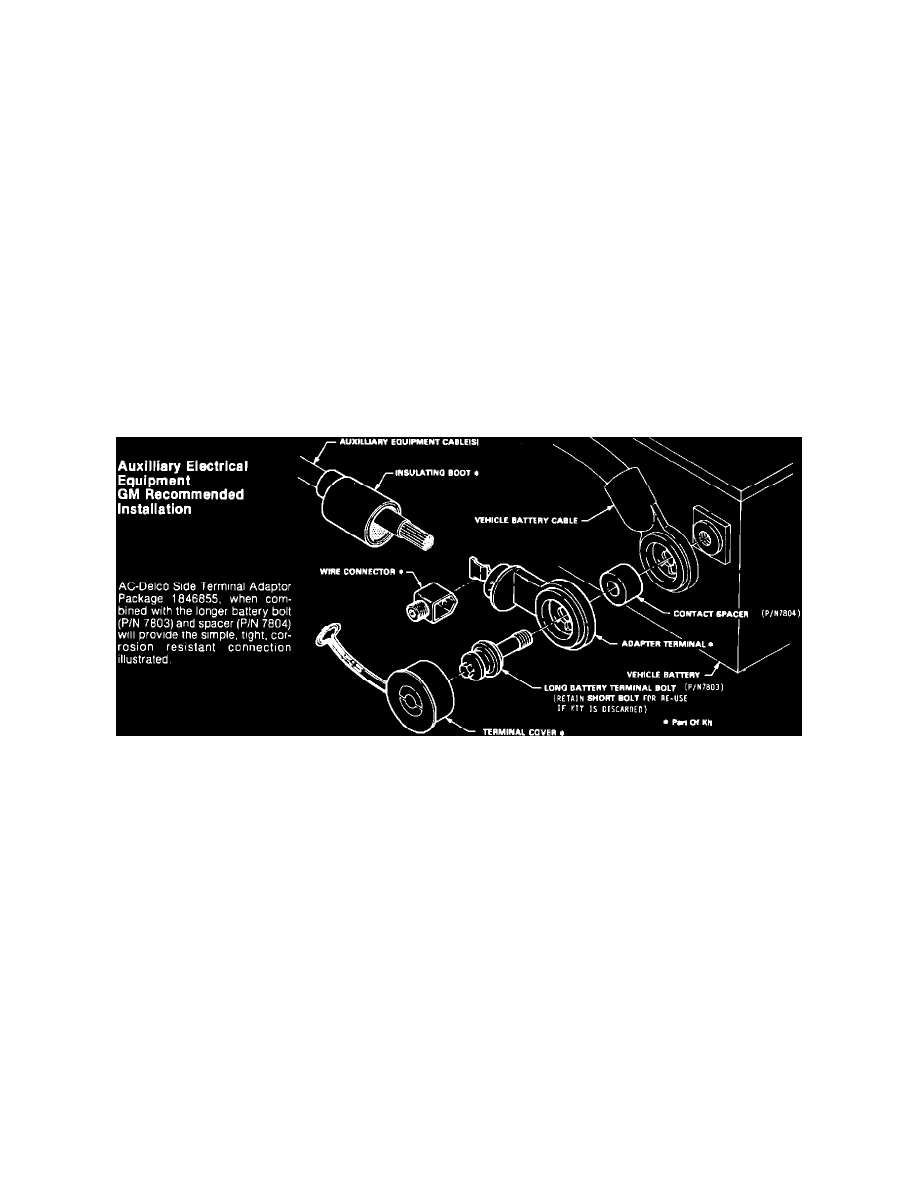Cutlass Ciera Cruiser L4-151 2.5L (1985)

Cellular Phone: Technical Service Bulletins
Accessories - Radio Telephone/Mobile Radio Precautions
SUBJECT
RADIO TELEPHONE/MOBILE RADIO INSTALLATION GUIDELINES
NUMBER: 85-I-20
DATE:
May 15, 1985
MODELS/YEARS
ALL MODELS
SECTION: 9
The purpose of this bulletin is to make available to dealer personnel radio telephone/mobile radio installation guidelines as well as a
Vehicle-Transceiver Problem Information Sheet. This information should be used by dealer personnel in reviewing the mobile users
concerns if a vehicle-transceiver malfunction should occur. This information may be copied and given to the owner and/or installer for
their use.
The Vehicle-Transceiver Problem Information Sheet may be used in the event it is necessary to contact the General Motors Electrical Systems Center
directly for problem assistance.
Certain radio telephones or land mobile radios or the way in which they are installed may adversely affect the vehicle operations such as the performance
of the engine and driver information, entertainment and electrical charging systems. Expenses incurred to protect the vehicle systems from any adverse
effect of any such installation are not the responsibility of General Motors Corporation. The following are general guidelines for installing a radio
telephone or land mobile radio in General Motors vehicles. These guidelines are intended to supplement, but not to be used in place of detailed
instructions for such installations which are the sole responsibility of the manufacturer of the involved radio telephone or land mobile radio.
INSTALLATION GUIDELINE (refer to the enclosed figures during installation)
1.
Transmitter Location
A.
Locate transceiver for remote radios on driver's side of trunk as near to the vehicle body side as possible.
B.
One piece transceivers should be mounted under dash or on transmission hump where they will not interfere with vehicle controls or
passenger movement.
2.
Antenna Installation
A.
The antenna should be a permanent mount type located in the center of the roof or center of the rear deck lid. Glass mounted antennas should
be kept as high as possible in the center of the rear window or windshield. If a magnetic mount antenna must be used, care should be taken to
mount the antenna in the same location as a permanent mount type. If a disguise mount antenna is used, great care should be taken to shield
tuning network from vehicle electronics and wiring or mount tuning network in an area completely clear of vehicle electronics and wiring.
B.
Each vehicle model and body style reacts to radio frequency energy differently. When dealing with an unfamiliar vehicle, it is suggested that
a magnetic mount antenna be used to check the proposed antenna location for unwanted effects on the vehicle. Antenna location is a major
factor in these effects.
3.
Antenna Cable Routing
A.
Always use a high quality feedline (at least 98% shield coverage) routed away from the ecm and other electronics modules.
B.
Care should be taken to avoid routing feedline with any vehicle wiring.
4.
Antenna Tuning
A.
It is important that the antenna be tuned properly and reflected power be kept to a minimum (vswr < 2:1)
5.
Radio Wiring and Connection Locations
A.
Transceiver battery and ground:
These connections should be made directly to the battery itself, including the ground or to the jump start block on vehicles so equipped The
transceiver power feeds should be #10 awg wire or larger, twisted if possible Again, the ground wire should not be attached to the body at any
